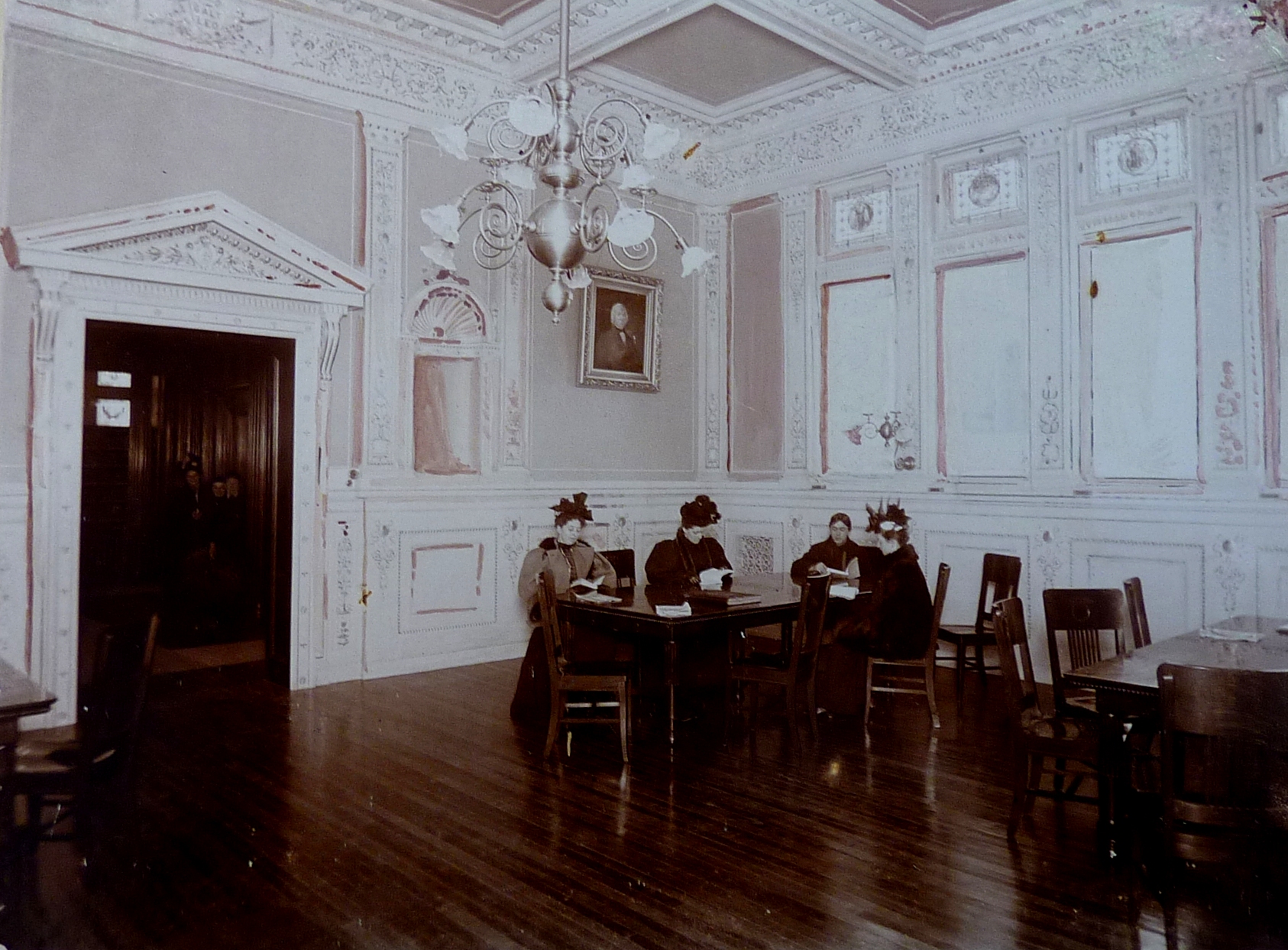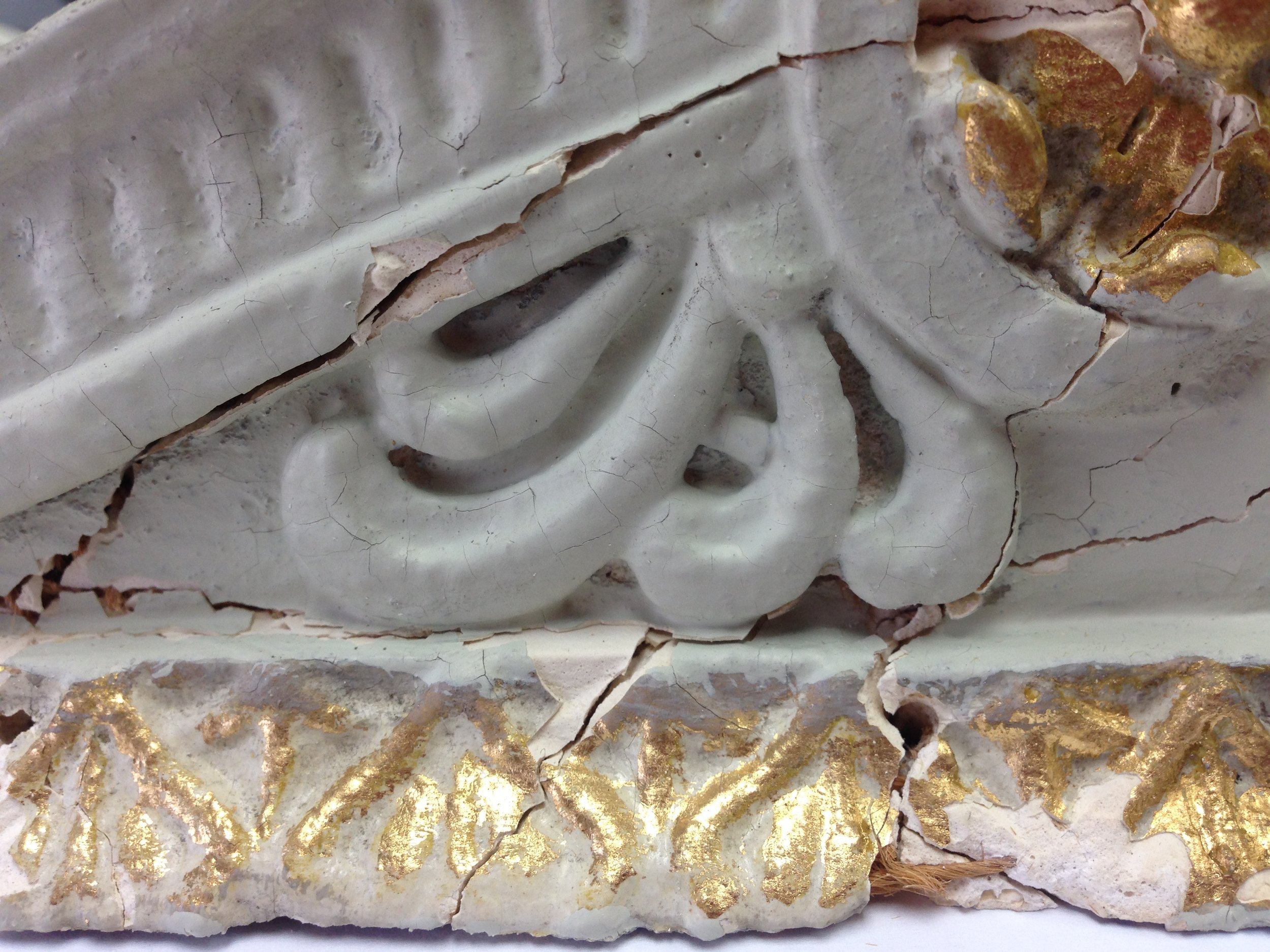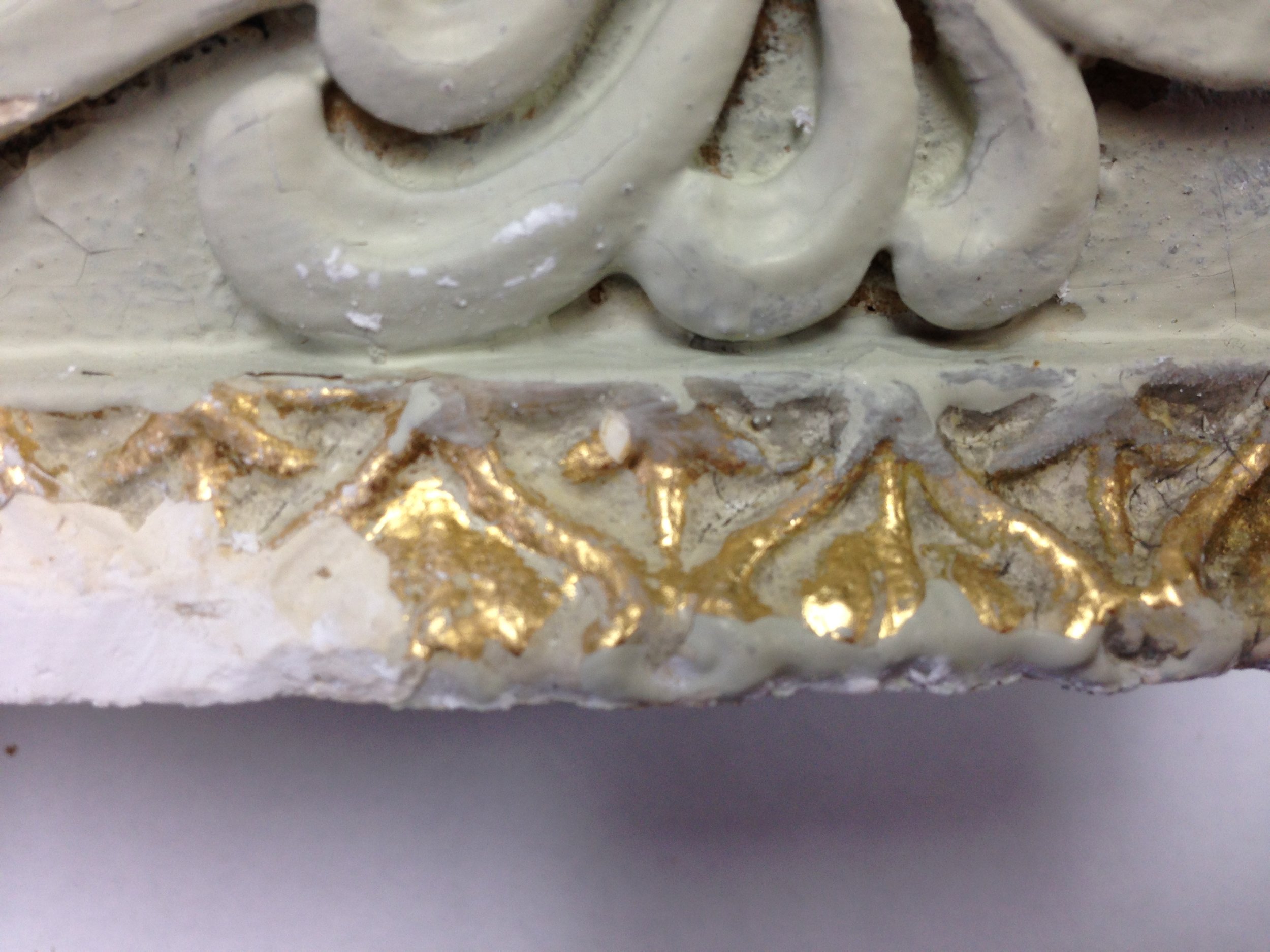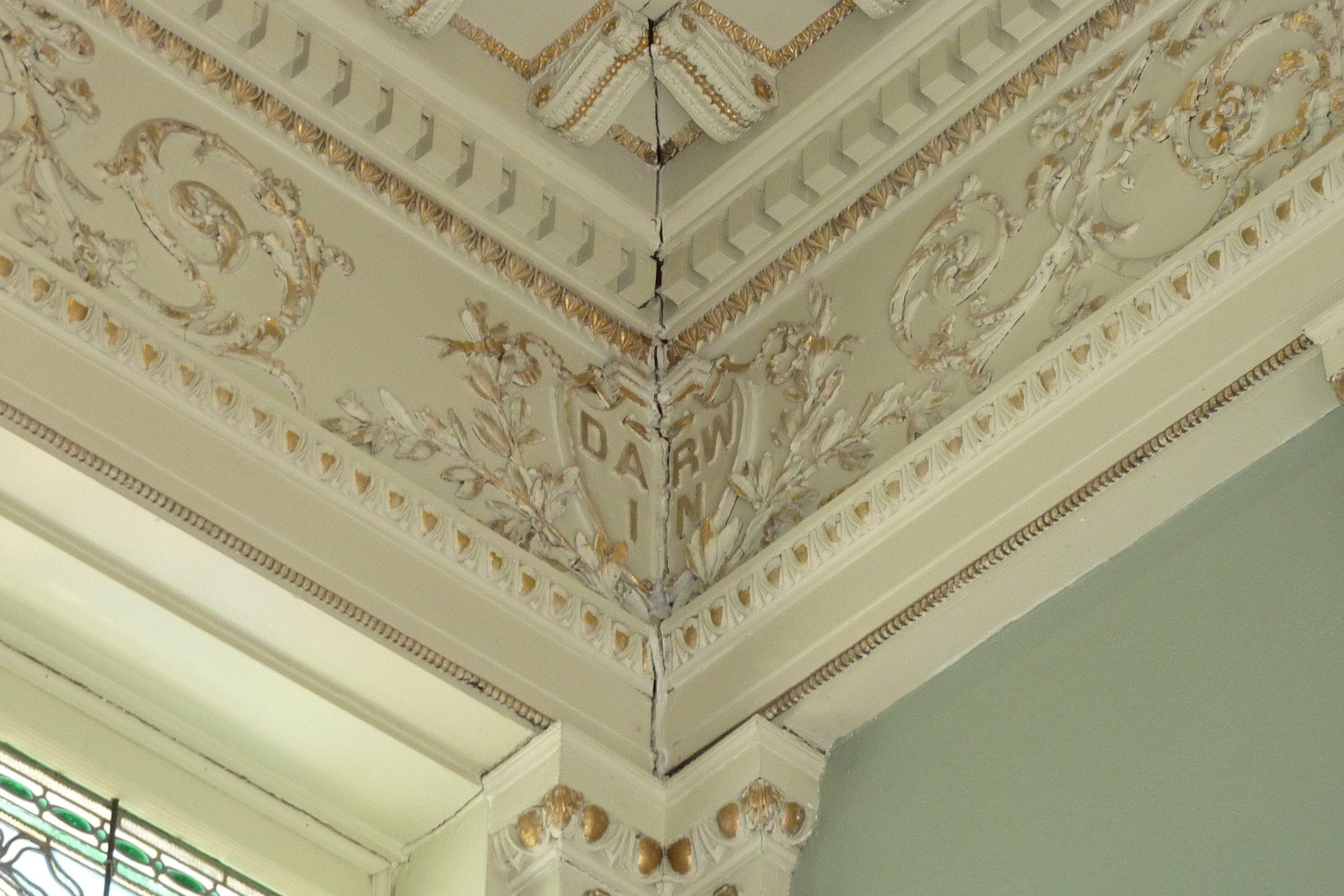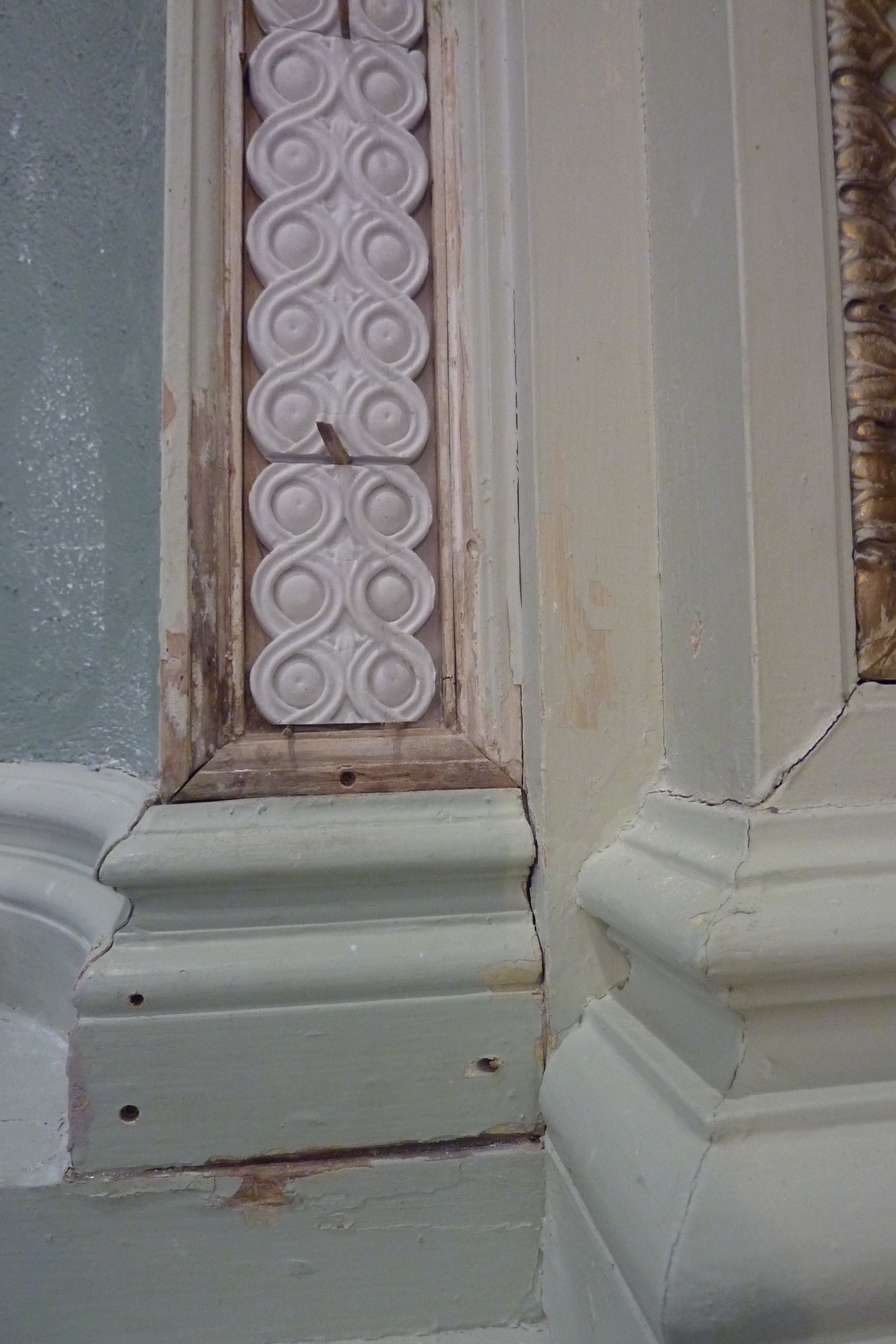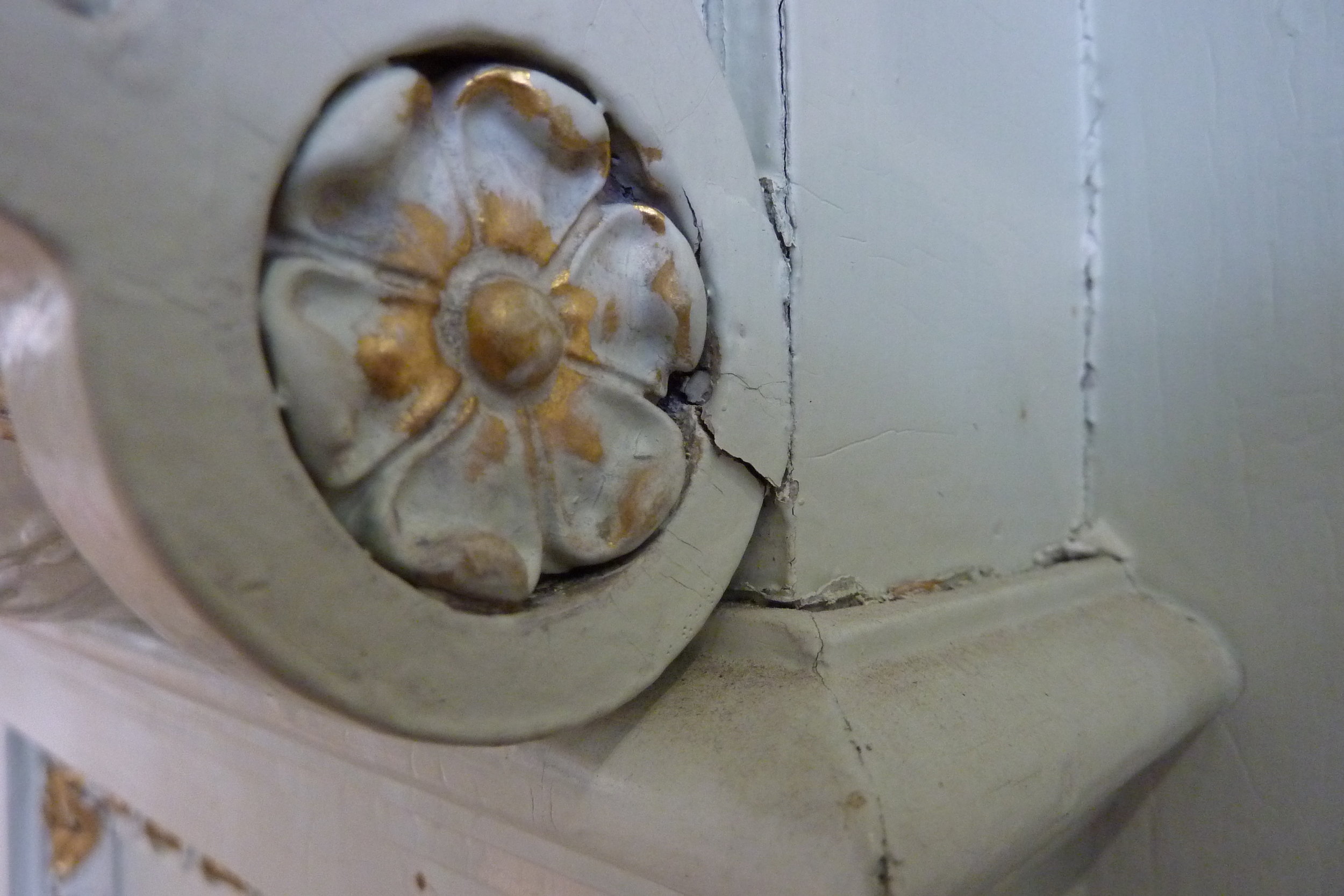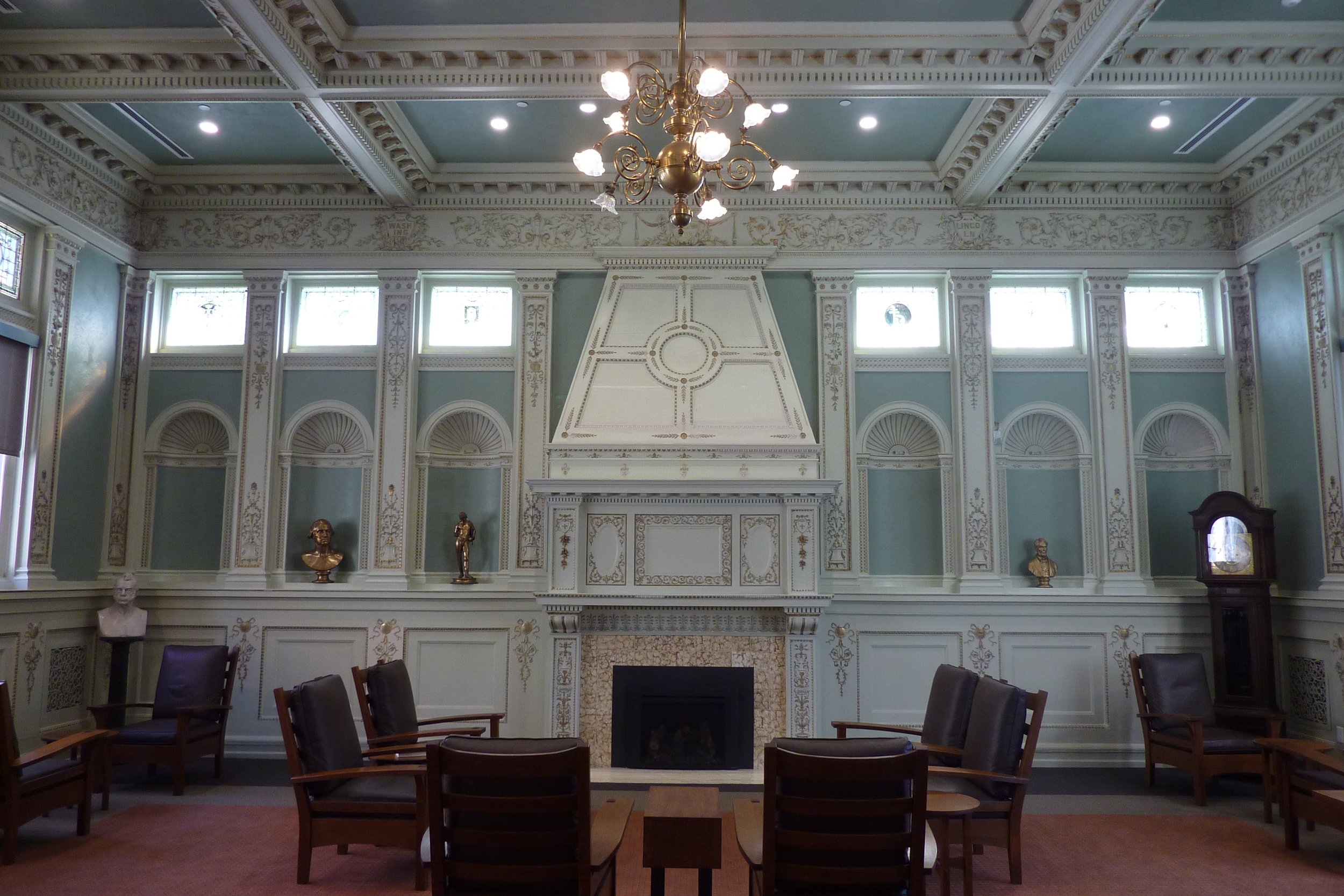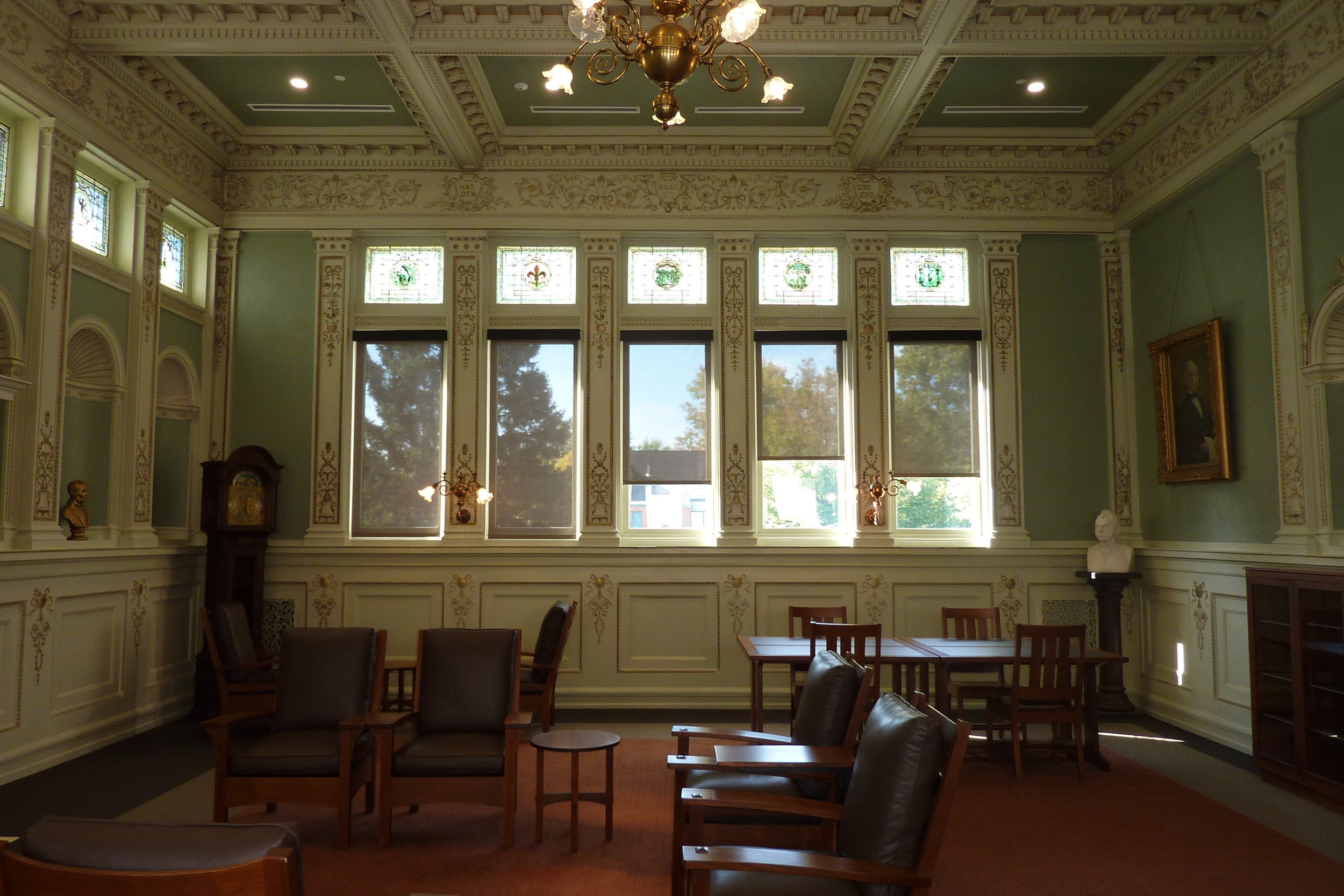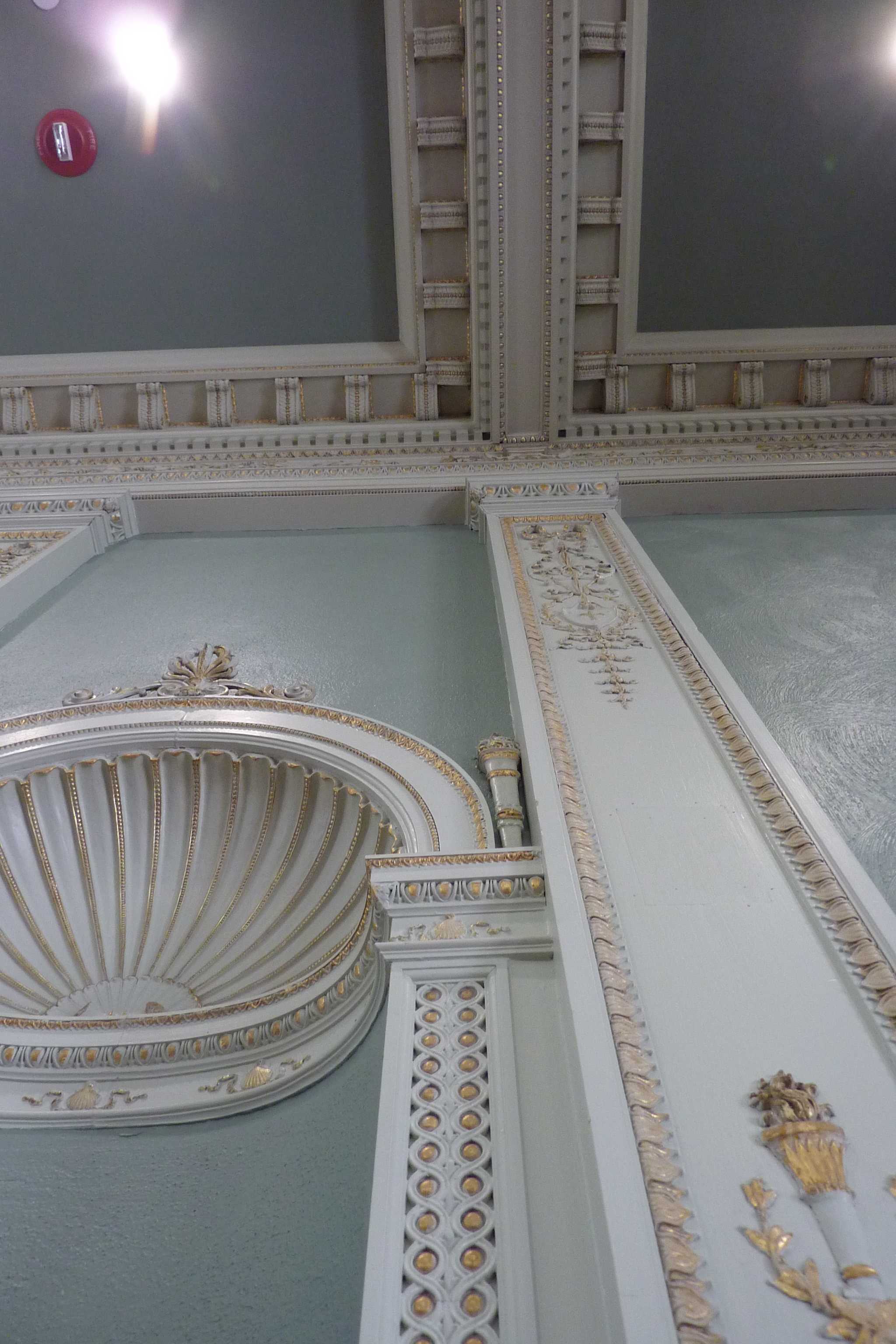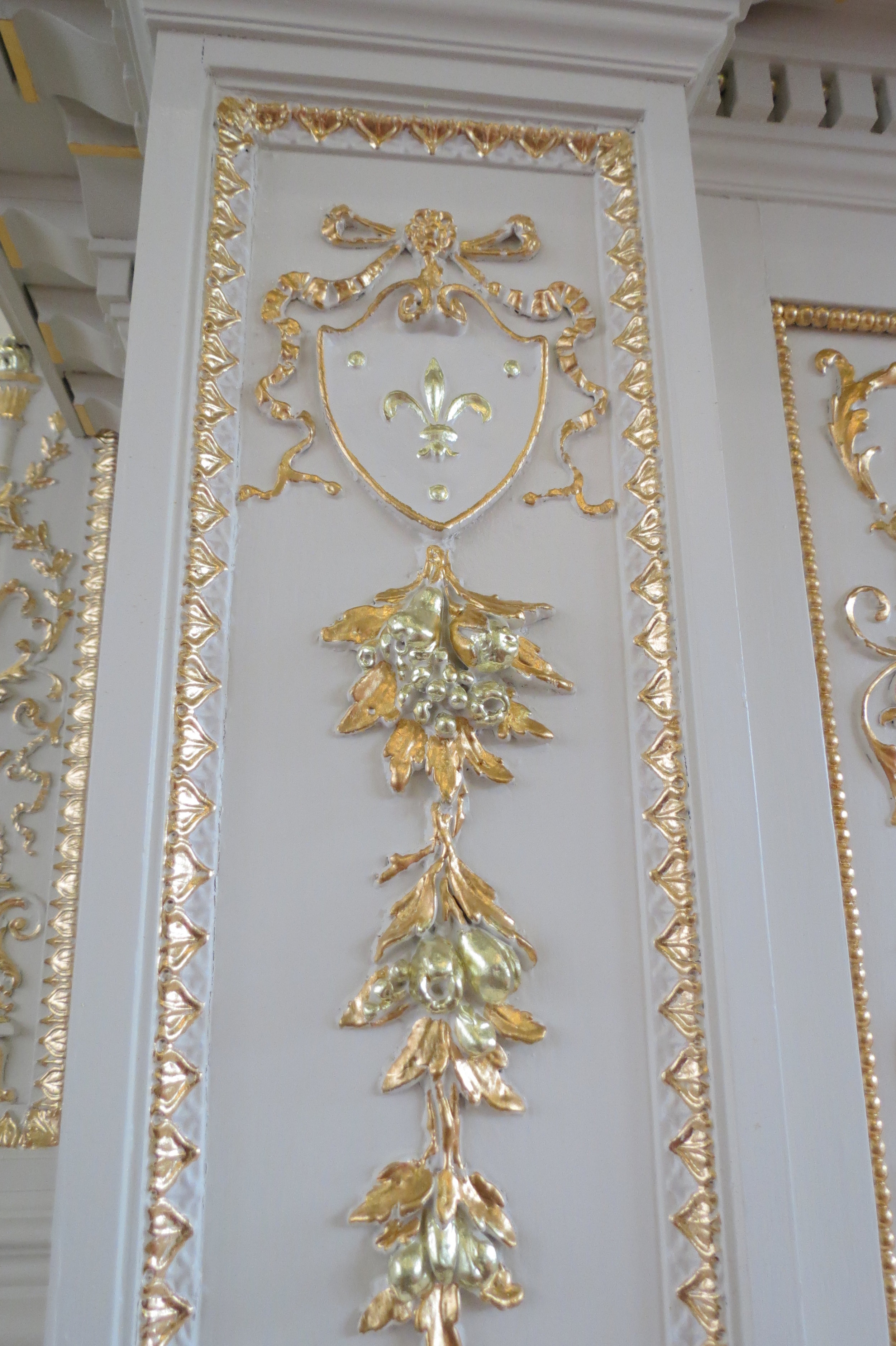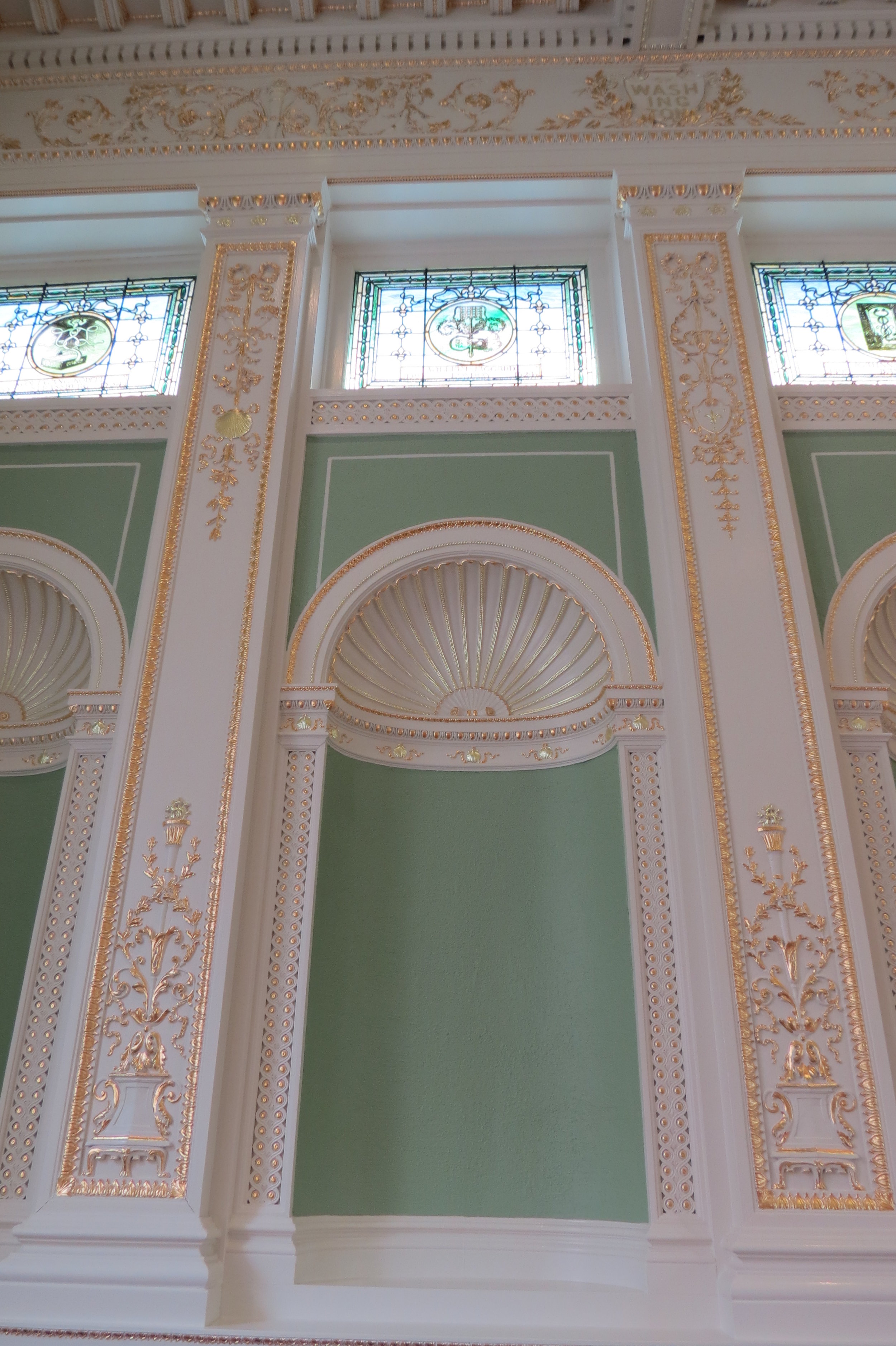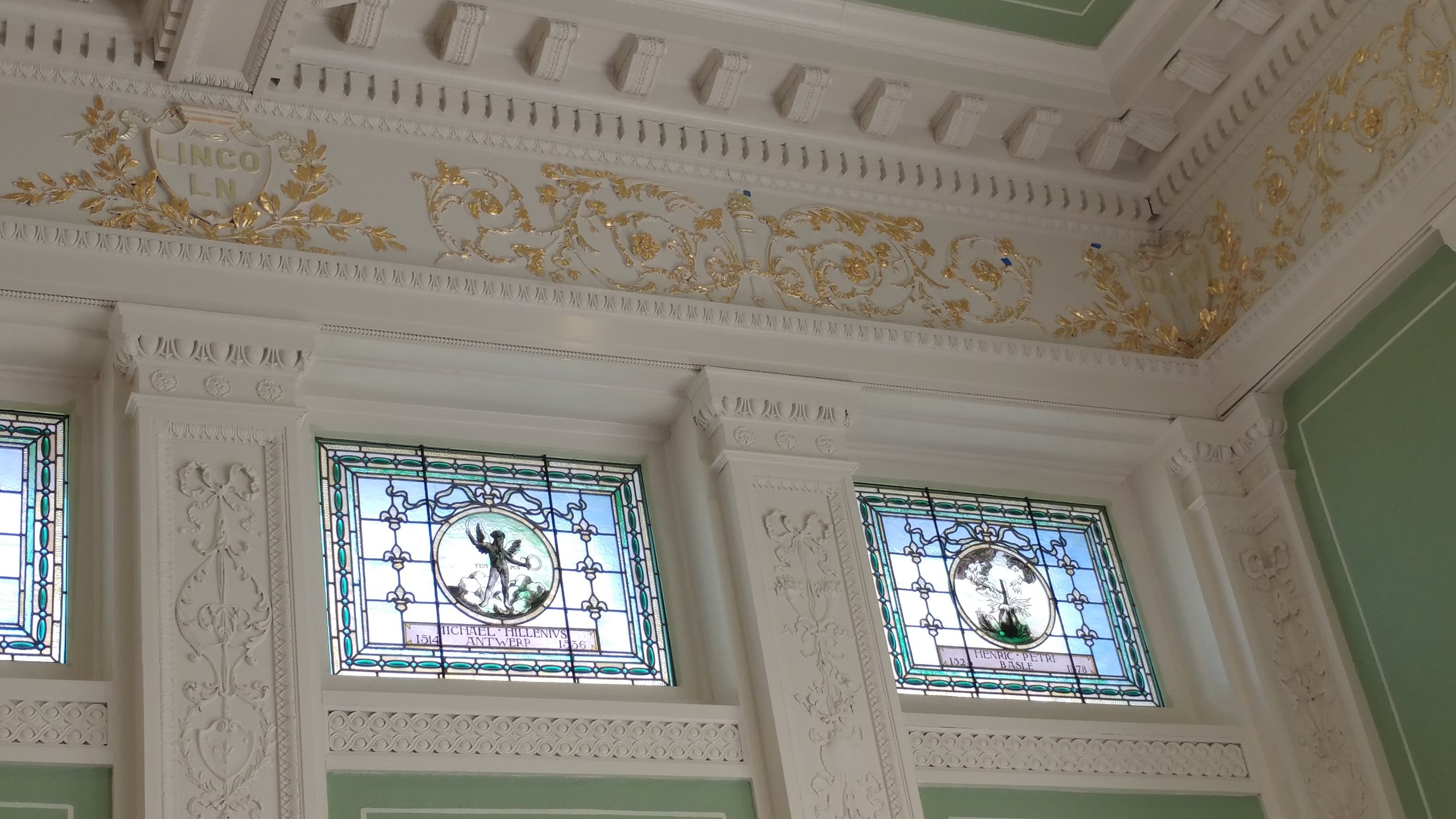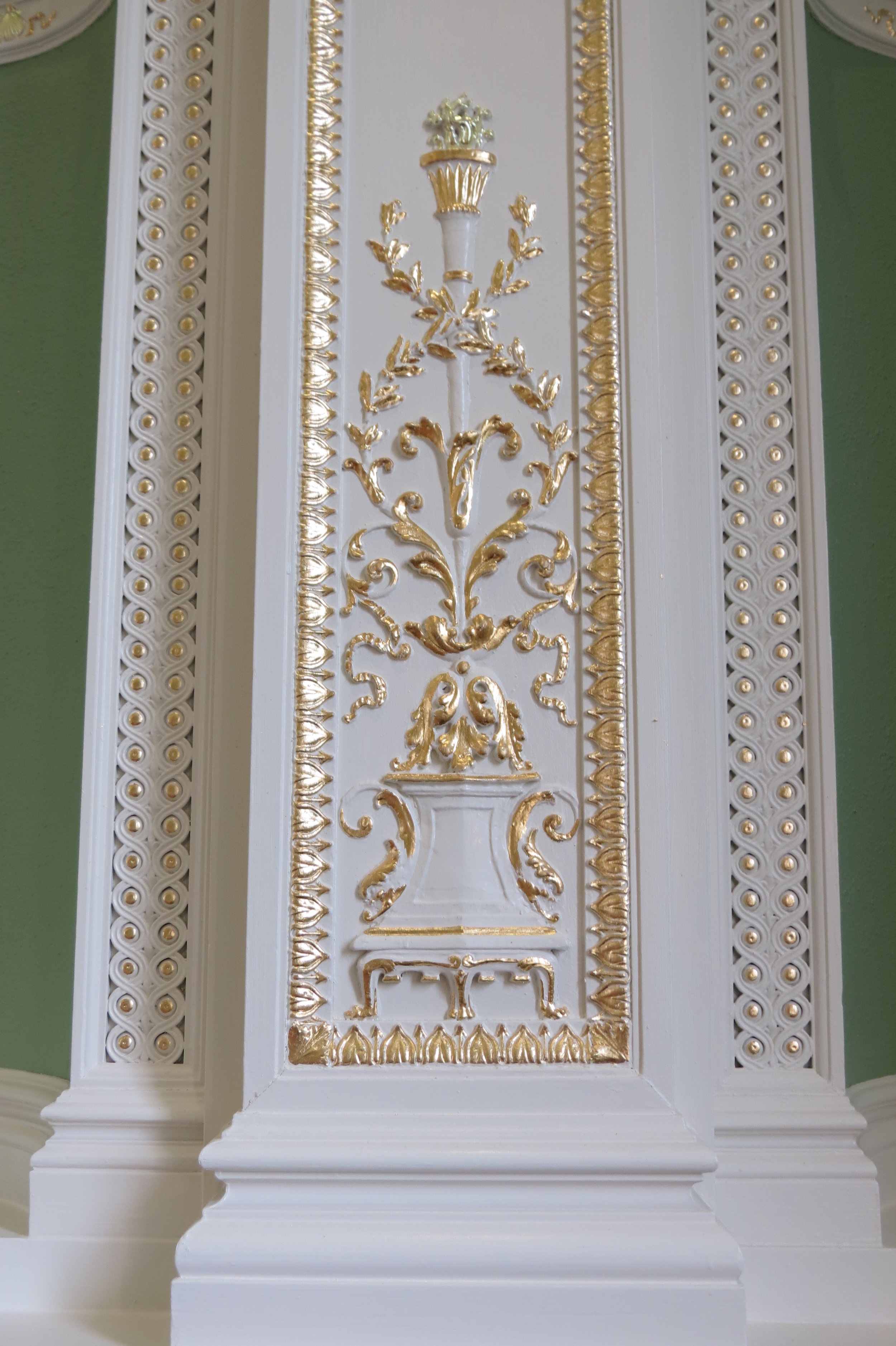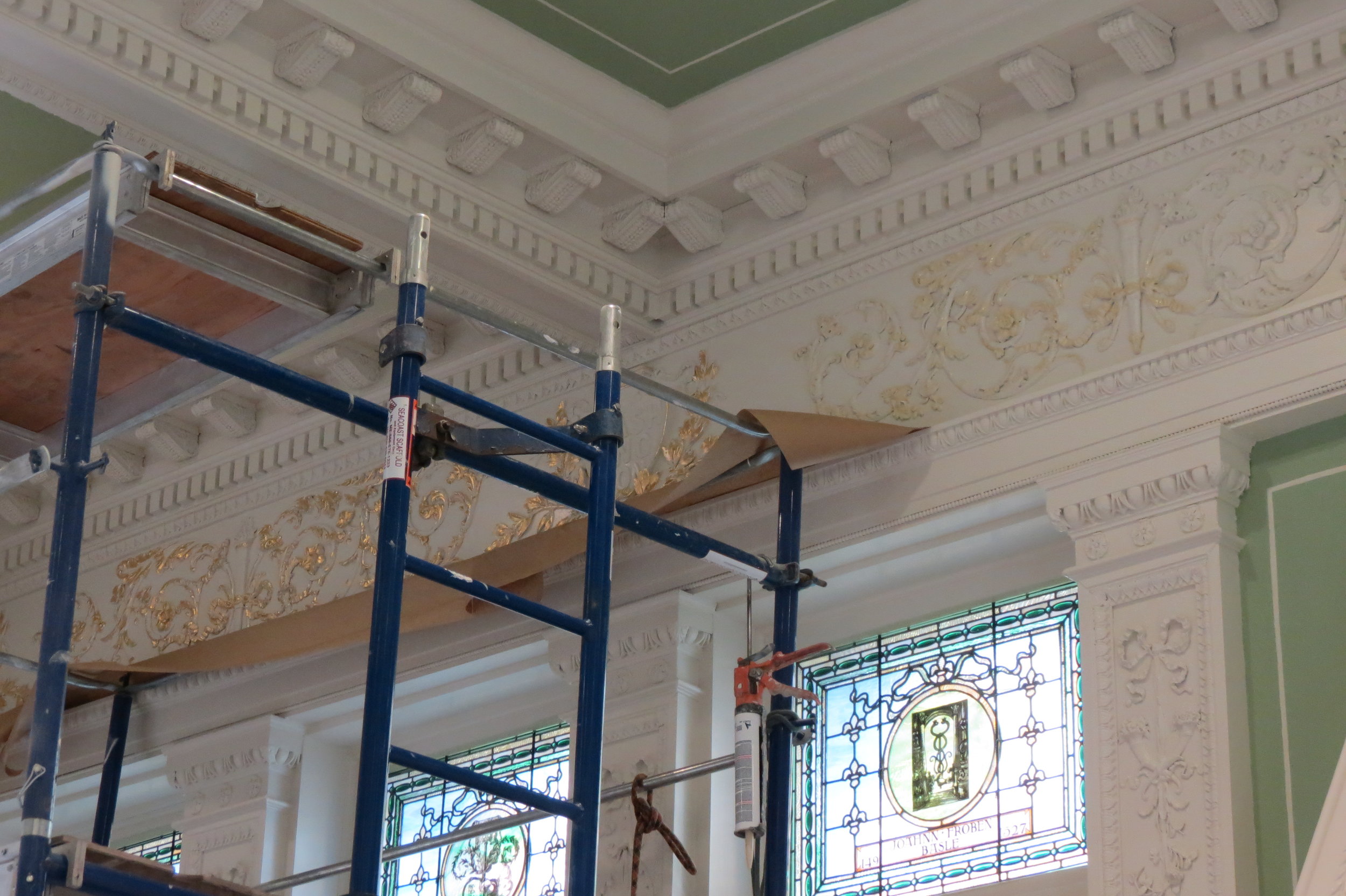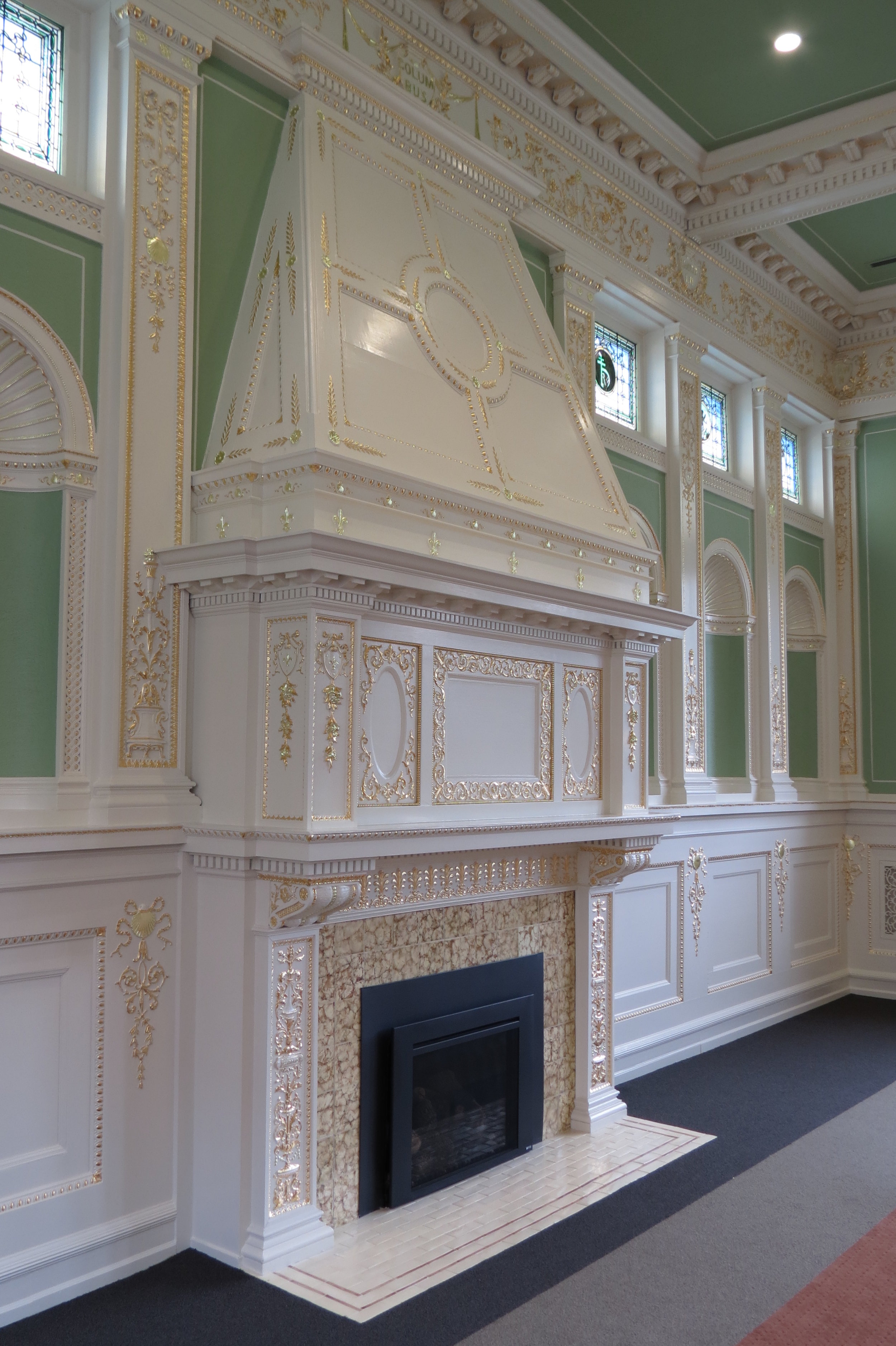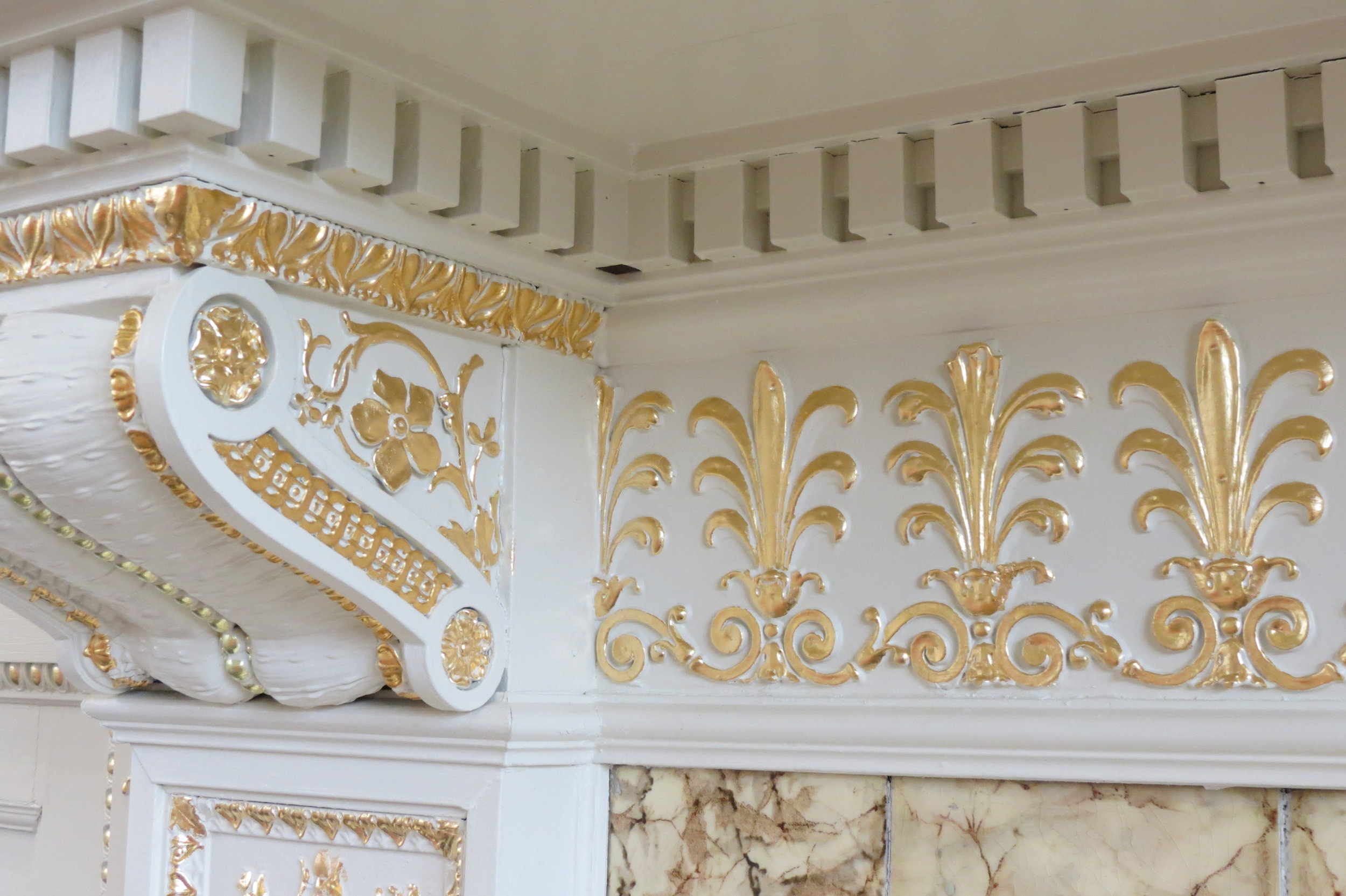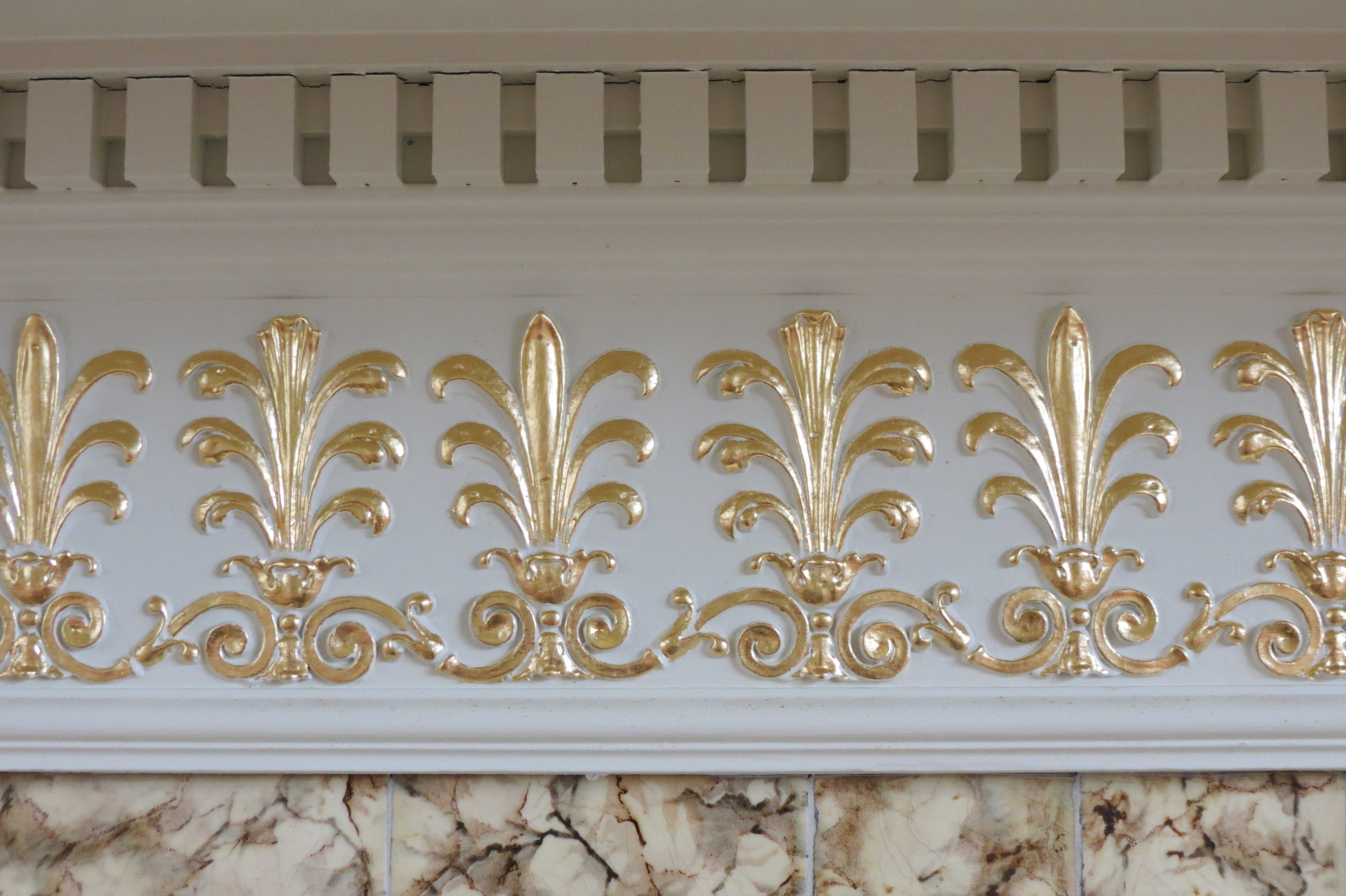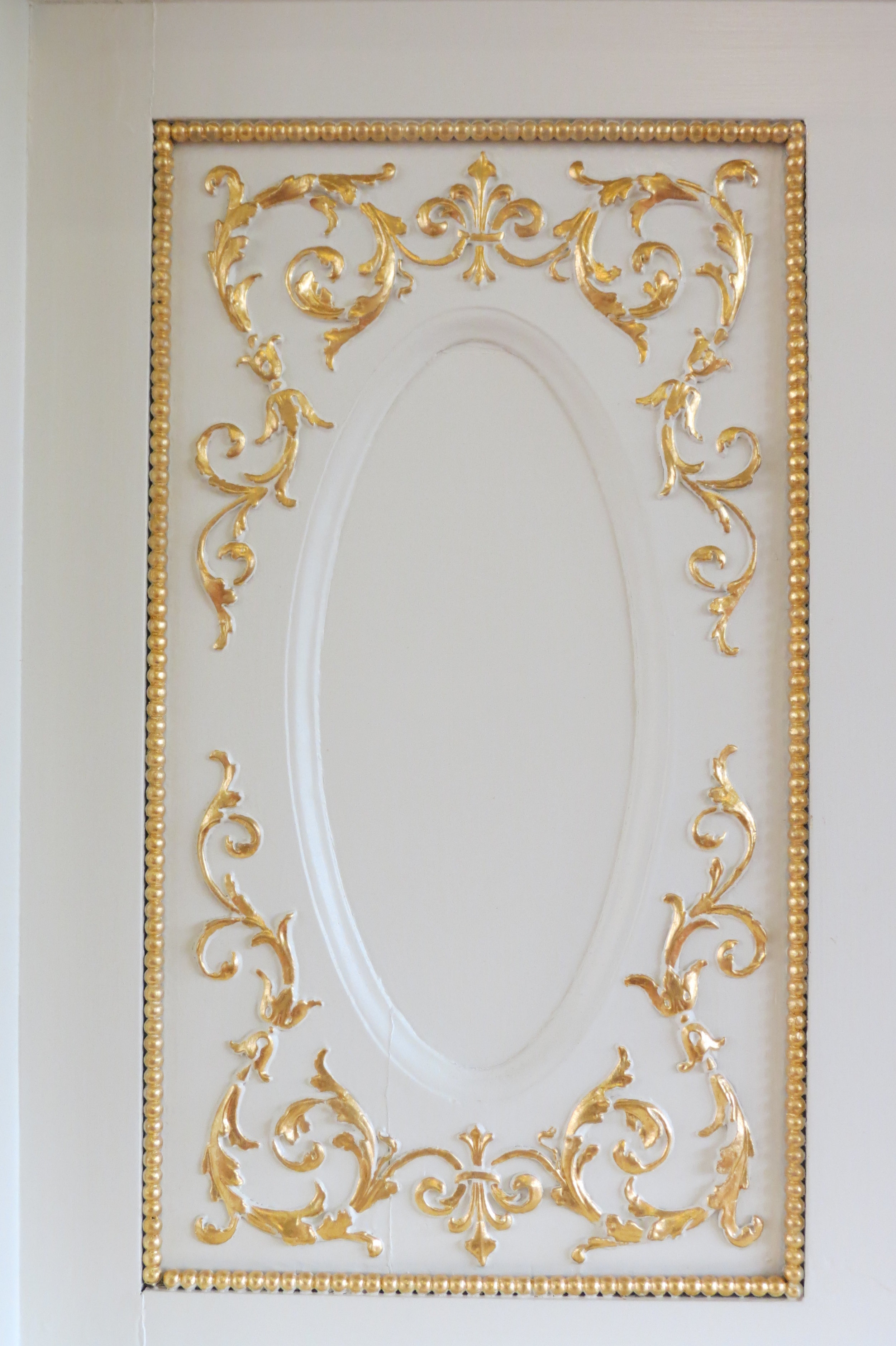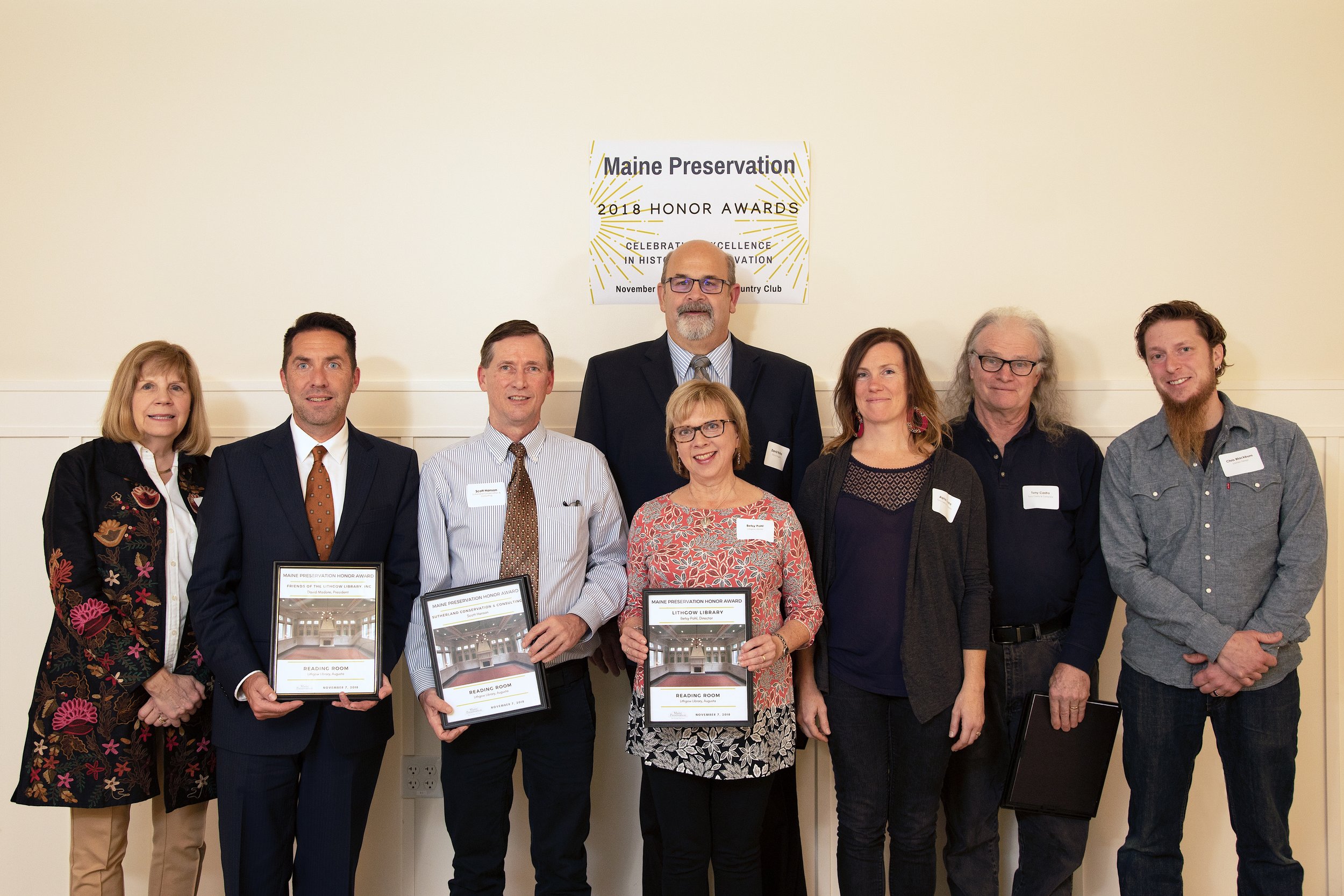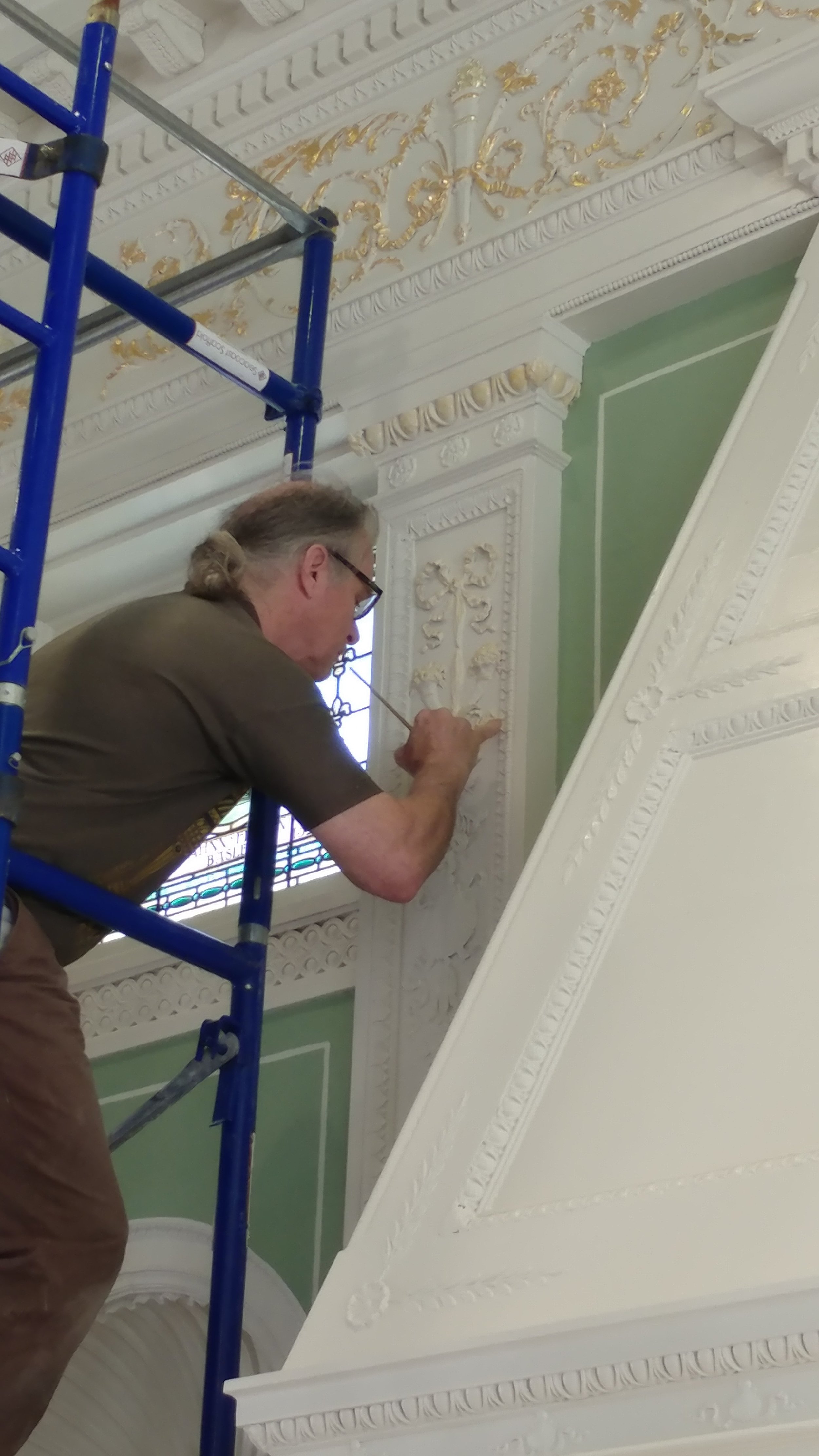The Lithgow Library in Augusta is one of the finest examples of Romanesque Revival architecture in Maine. Pittsburgh architects Joseph Ladd Neal, a Maine native, and his partner Alfred Hopkins were the proud winners of an 1893 design competition hosted by the Trustees of the Lithgow Library. With funding from a challenge match issued by Andrew Carnegie, local subscriptions and a public campaign, the construction was completed in 1896. Built of Norridgewock Granite, the interior features extensive use of quarter sawn oak trim and stained glass. The library has experienced very few changes since its original design and the Reading Room still features elaborate ornamental plasterwork and extensive gilding in gold leaf.
Changes came in 2015 when the Lithgow Library raised millions of dollars to undertake an extensive rehabilitation and expansion project. After this initial project was completed the Friends of Lithgow Library decided to undertake the restoration of the Reading Room.
Tony Castro and Company assessed the room and made recommendations for its restoration. Sutherland Conservation and Consulting was hired to undertake cross-section microscopy paint analysis to determine the original colors and gilding treatment. The Friends decided to fully restore the original wall paint and gold leaf in two colors, as well as the missing plaster. The total cost for this project was over $100,000, all raised from private sources. Jon Sampson of Sampson & Company Ornamental Plasterers worked on the plaster, while Tony Castro & Company painted and gilded, using 1,100 sheets of gold leaf imported from Italy.
The restoration of the plaster, gilding, and paint colors has brought the room back to its stunning original appearance and complements the unaltered stained-glass windows and fireplace tile work. The commitment of the Friends of the Lithgow Library to fully restore this space has given the citizens of Augusta, and all those who visit, one of the finest and most spectacular public spaces in Maine.

